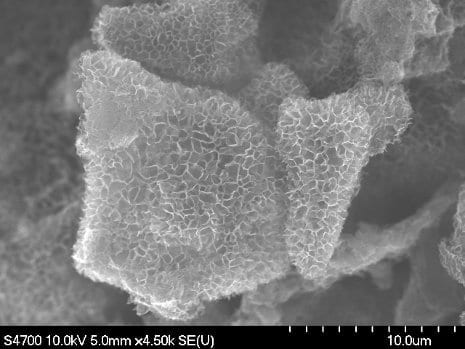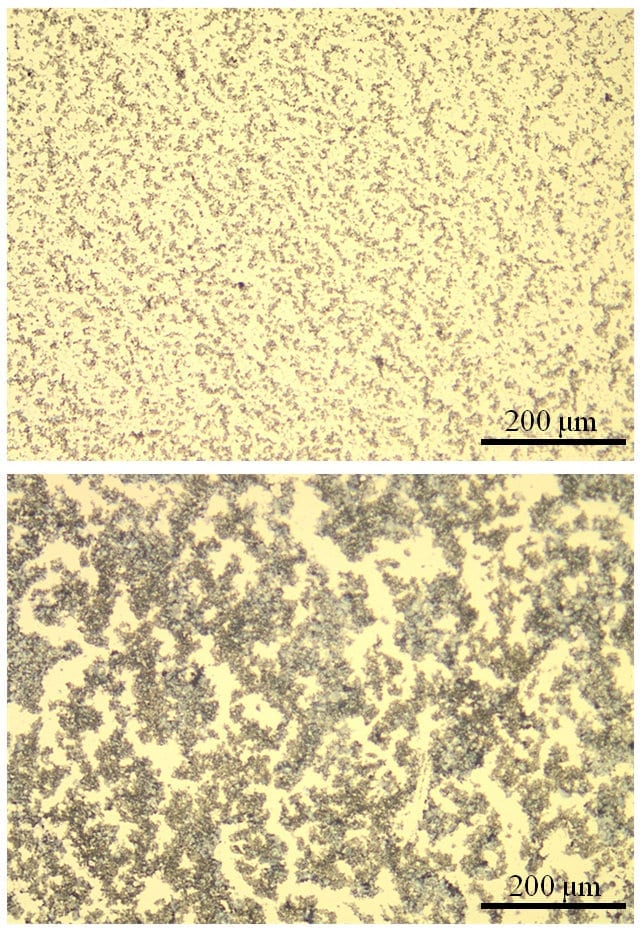
Physicists from Bielefeld University have developed a new method of fabrication for ultrathin carbon membranes
In the future, carbon nanomembranes are expected to be able to filter out very fine materials. These separating layers are ultrathin, consisting of just one layer of molecules. In the long term, they could allow to separate gases from one another, for example, filtering toxins from the air. At present, the basic research is concerned with the production of nanomembranes.
A research team working with Professor Dr. Armin Gölzhäuser of Bielefeld University has succeeded in developing a new path to produce such membranes. The advantage of this procedure is that it allows a variety of different carbon nanomembranes to be generated which are much thinner than conventional membranes. The upcoming issue of the renowned research journal ‘ACS Nano’ reports on this research success.
More than ten years ago, Professor Gölzhäuser and his then team created the groundwork for the current development, producing a carbon nanomembrane from biphenyl molecules. In the new study, the process was altered so as to allow the use of other starting materials. The prerequisite is that these molecules are also equipped with several so-called phenyl rings. For their new method, the researchers use the starting material in powder form. They dissolve the powder to pure alcohol and immerse very thin metal layer in this solution.
After a short time the dissolved molecules settle themselves on the metal layer to form a monolayer of molecules. After being exposed to electron irradiation, the monolayer becomes a cross-linked nanomembrane. Subsequently the researchers ensure that the metal layer disintegrates, leav-ing only the nanomembrane remaining. ‘Up until now, we have produced small samples which are are a few centimetres square’, says Gölzhäuser. ‘However, with this process it is possible to make nanomembranes that are as big as square metres.’
This new method is so special because the researchers can produce made-to-measure nanomembranes. ‘Every starting material has a different property, from thickness or trans-parency to elasticity. By using our process, these characteristics are transferred onto the nanomembrane.’ In this way, carbon nanomembranes can be produced to address many dif-ferent needs. ‘That was not possible before now’, says Gölzhäuser.
Furthermore, graphene can be made from nanomembranes. Researchers worldwide are ex-pecting graphene to have technically revolutionising properties, as it has an extremely high tensile strength and can conduct electricity and heat very well. The conversion from nanomembranes into graphene is simple for the Bielefeld researchers:
The Latest Bing News on:
Ultrathin carbon membranes
- This legendary brand cracks the code: here’s the most powerful hydrogen fuel cellon April 25, 2024 at 7:29 am
Legendary brand has created the first lightweight hydrogen fuel cell: the most powerful, but the smallest ever seen in history ...
- Government honours exceptional exporters in prestigious awardson April 24, 2024 at 3:36 am
Now in their second year, the awards celebrate the international sales success of small-medium businesses across the UK and provide a stepping stone for further growth and opportunity. Winners include ...
- New solar sail technology launches on Rocket Lab...on April 23, 2024 at 11:39 am
A potential new way to travel through space is set to launch aboard Rocket Lab’s Electron rocket from Launch Complex 1 located on New Zealand’s Mahia Peninsula. The mission, named “Beginning of the ...
- A new electrochemical approach could reduce ocean acidity and remove carbon in the processon April 23, 2024 at 10:40 am
In the effort to combat the catastrophic impacts of global warming, we must accelerate carbon emissions reduction efforts and rapidly scale strategies to remove carbon dioxide (CO2) from the ...
- Researchers can now measure important thermal properties of ultrathin silicon membraneson April 17, 2024 at 5:00 pm
Think about graphene or ultra-thin silicon membrane for instance. Scientists at TU Delft have taken an important step in application of these materials: they can now measure important thermal ...
The Latest Google Headlines on:
Ultrathin carbon membranes
[google_news title=”” keyword=”Ultrathin carbon membranes” num_posts=”10″ blurb_length=”0″ show_thumb=”left”]
The Latest Bing News on:
Carbon nanomembranes
- Feed has no items.
The Latest Google Headlines on:
Carbon nanomembranes
[google_news title=”” keyword=”carbon nanomembranes” num_posts=”10″ blurb_length=”0″ show_thumb=”left”]









